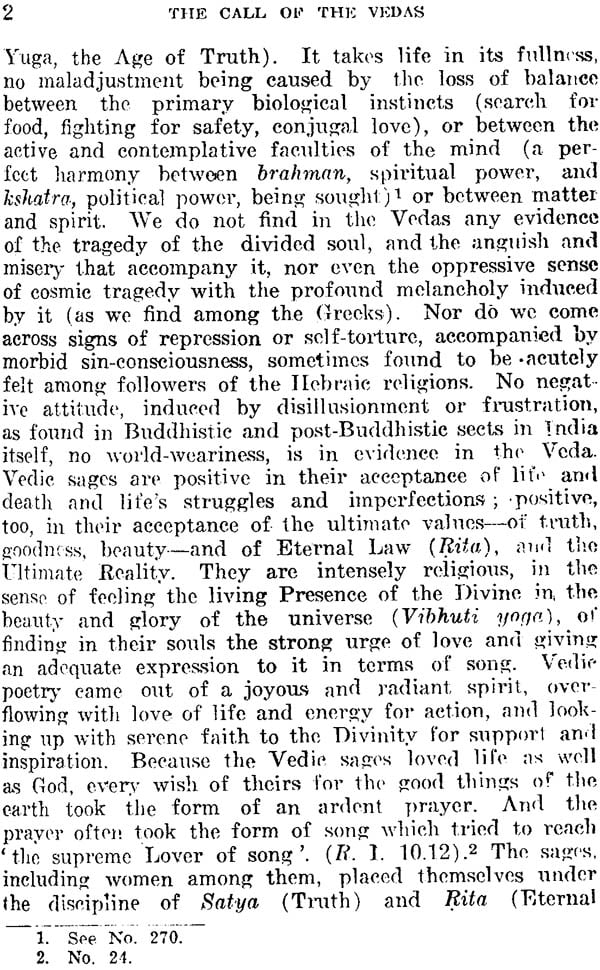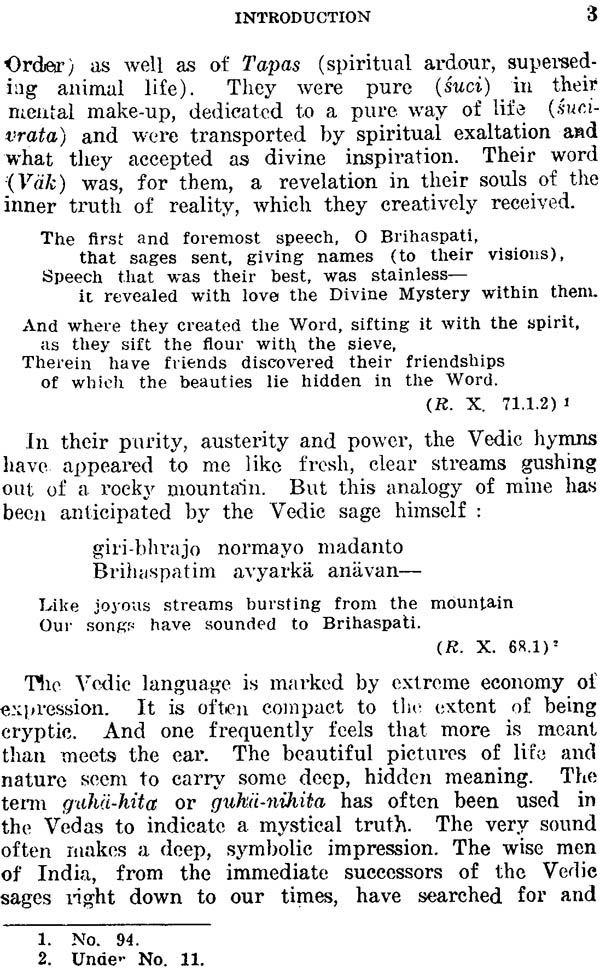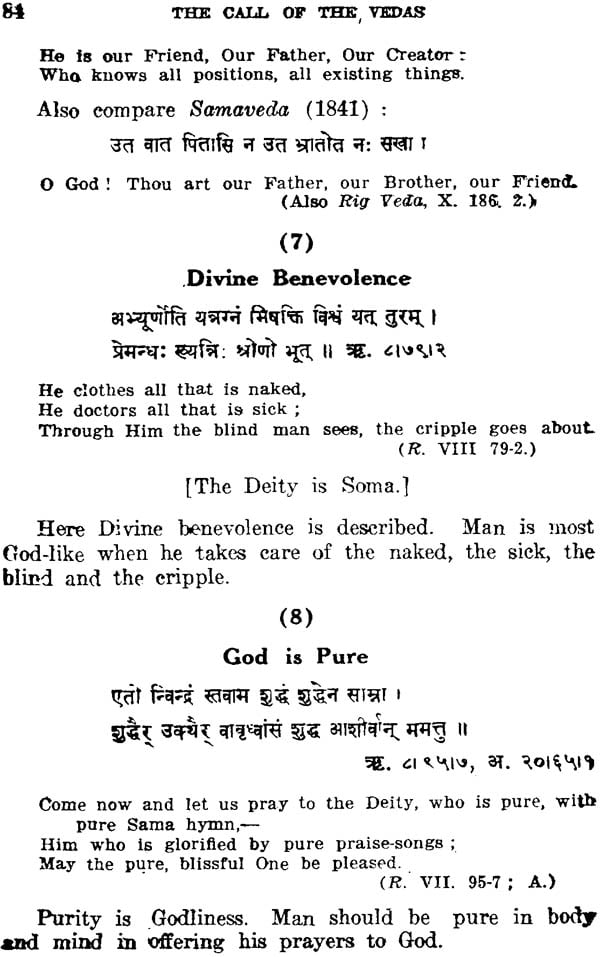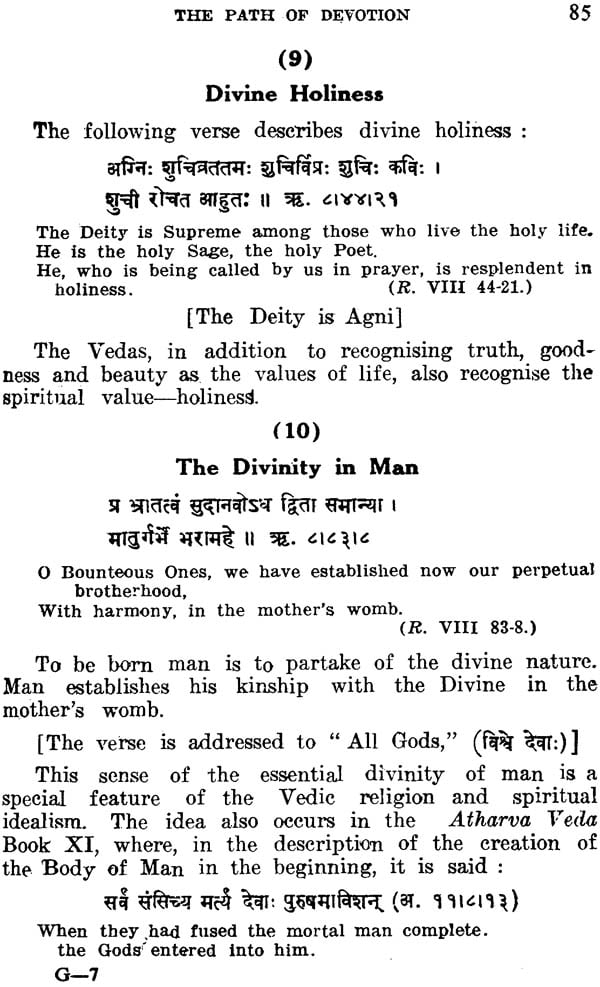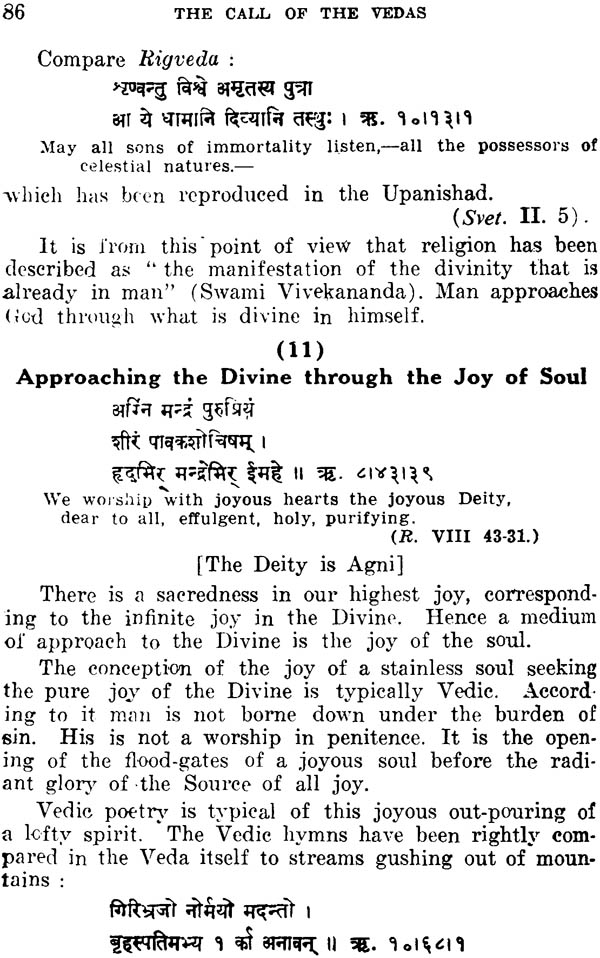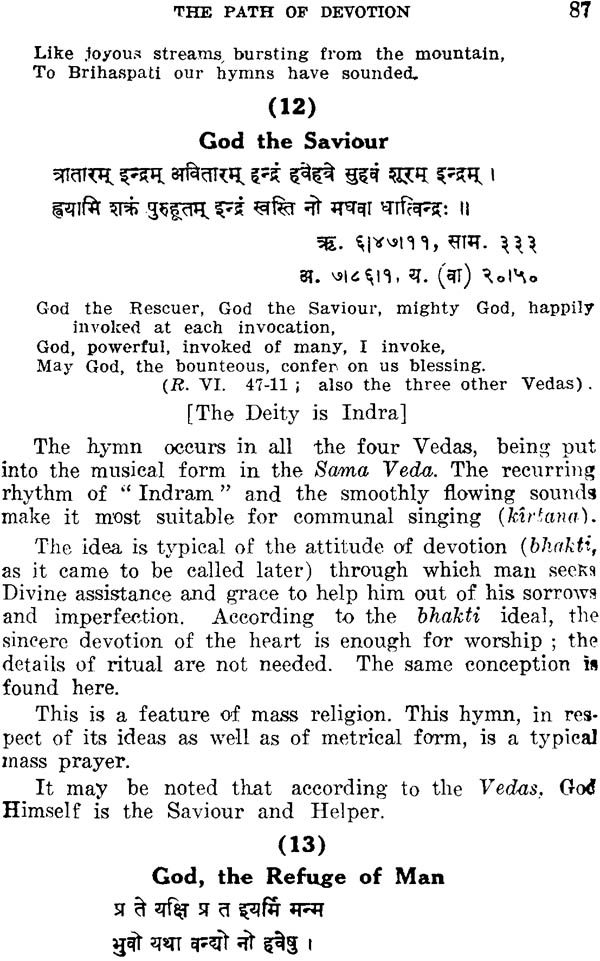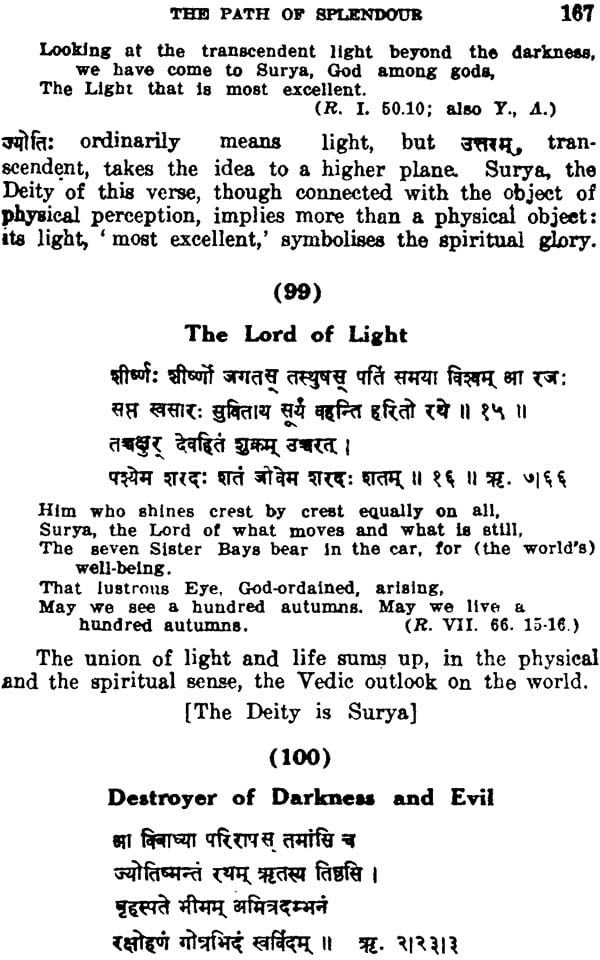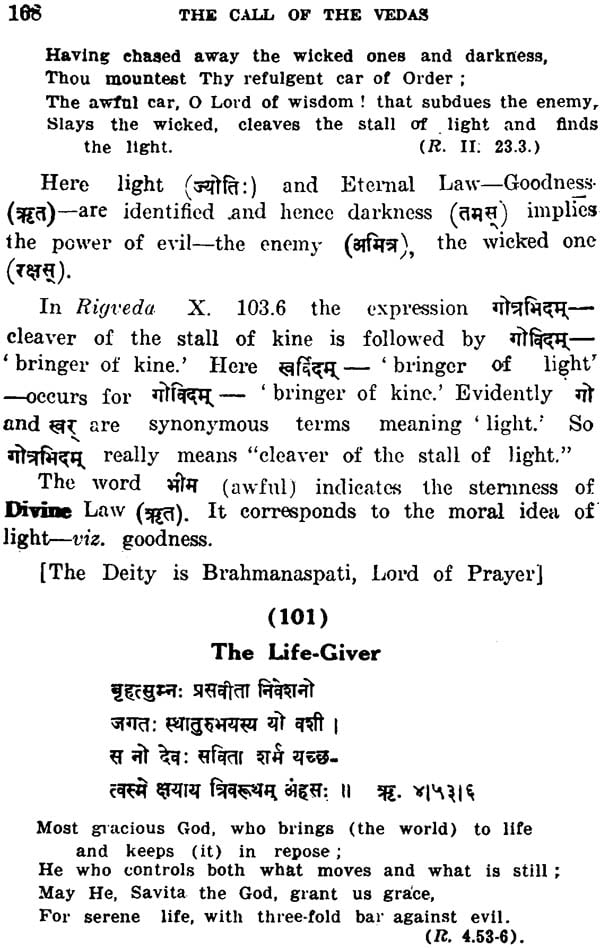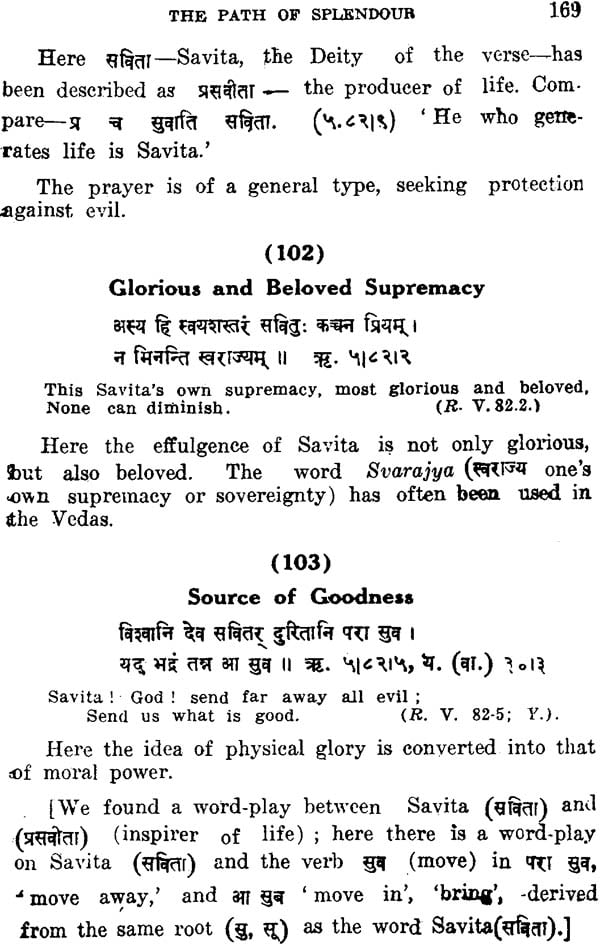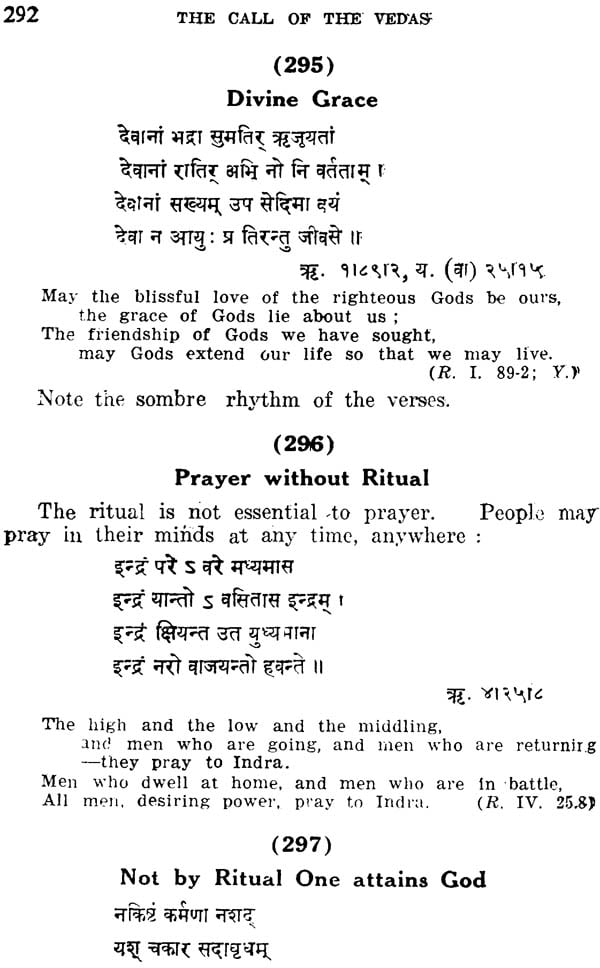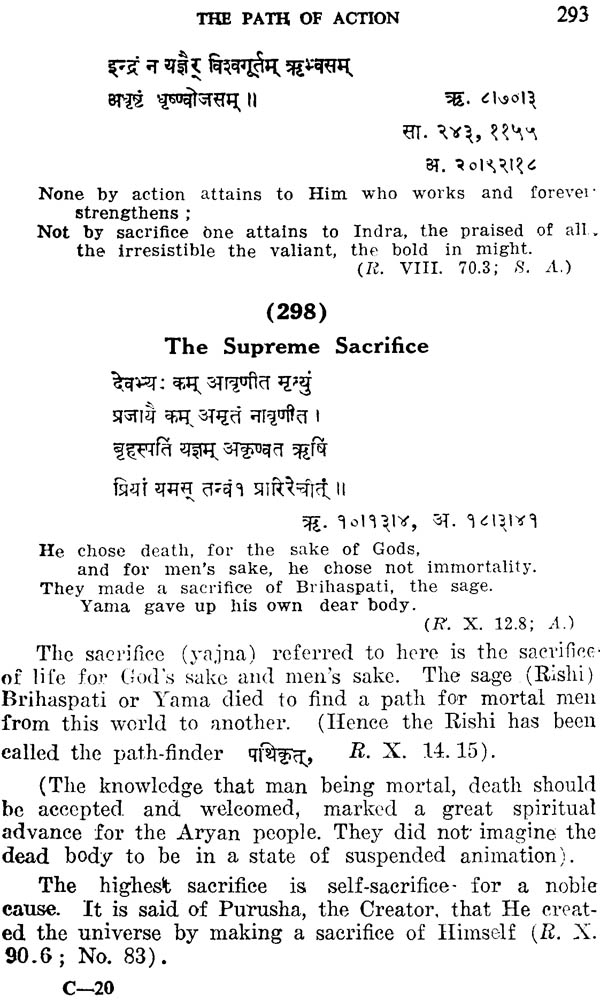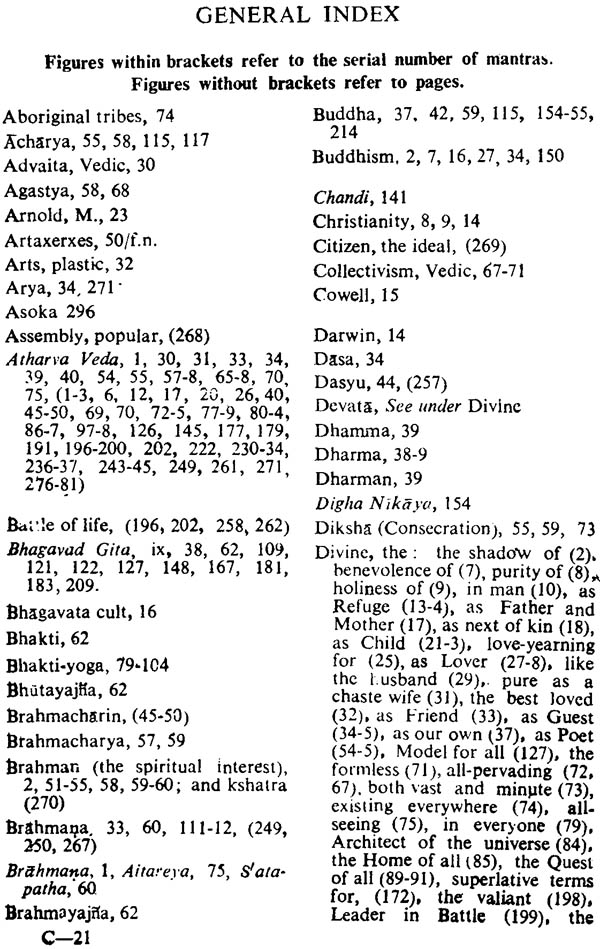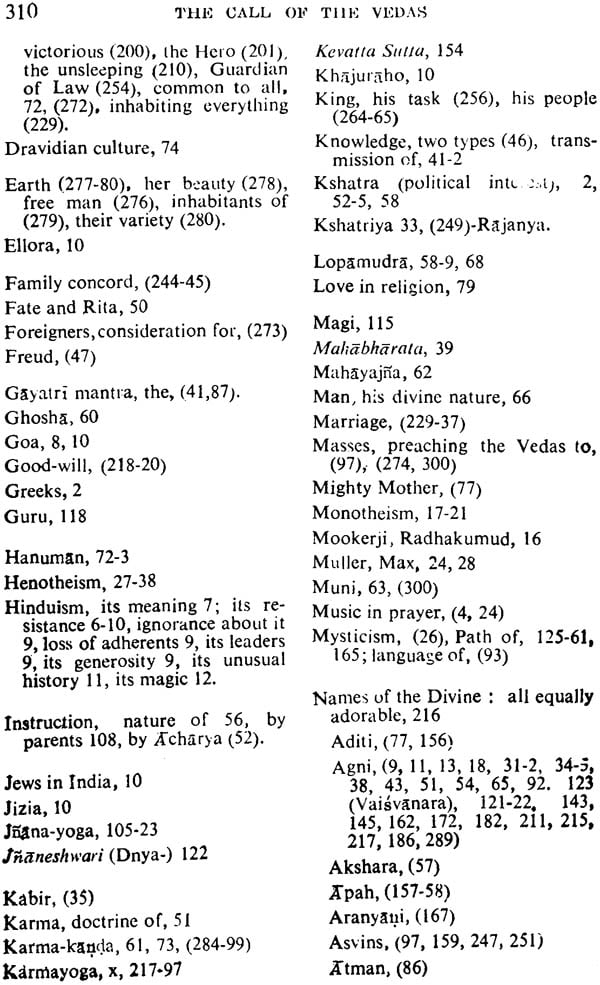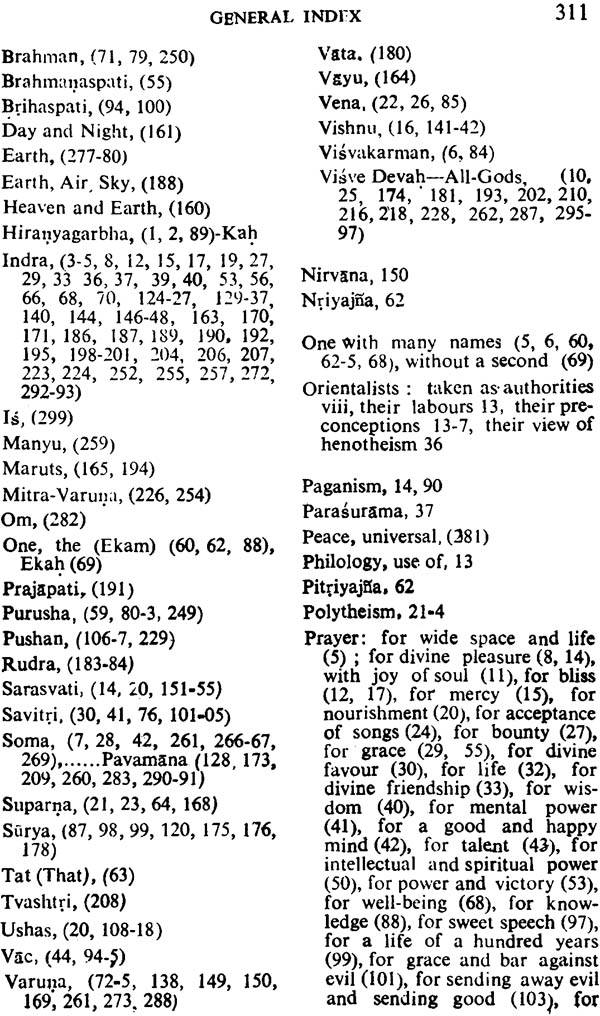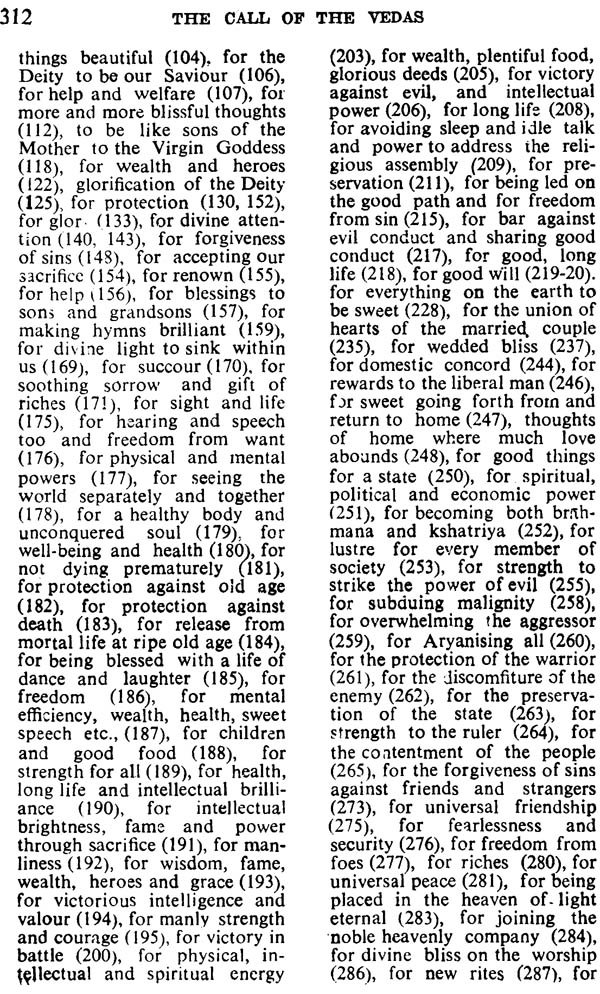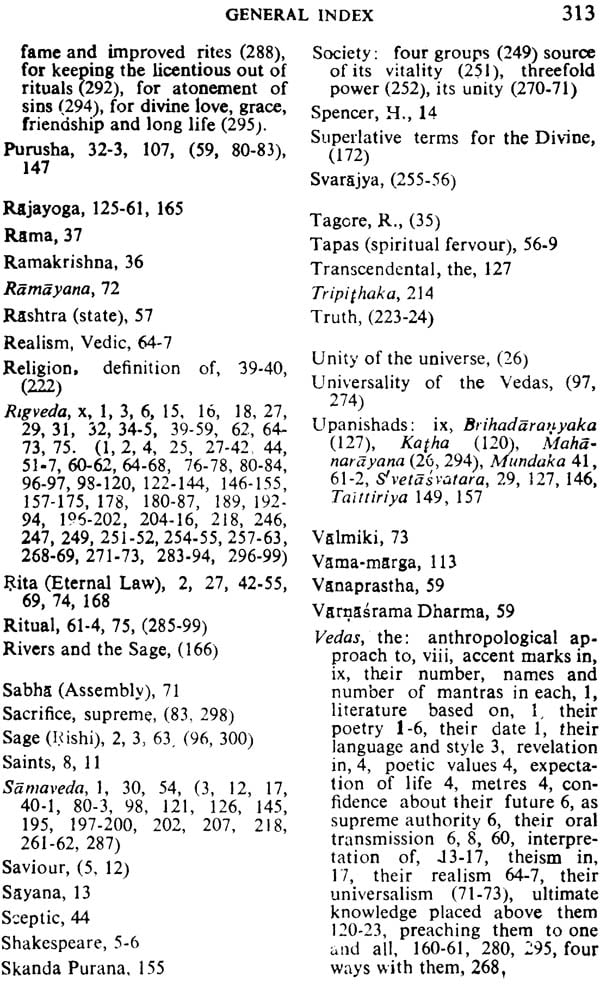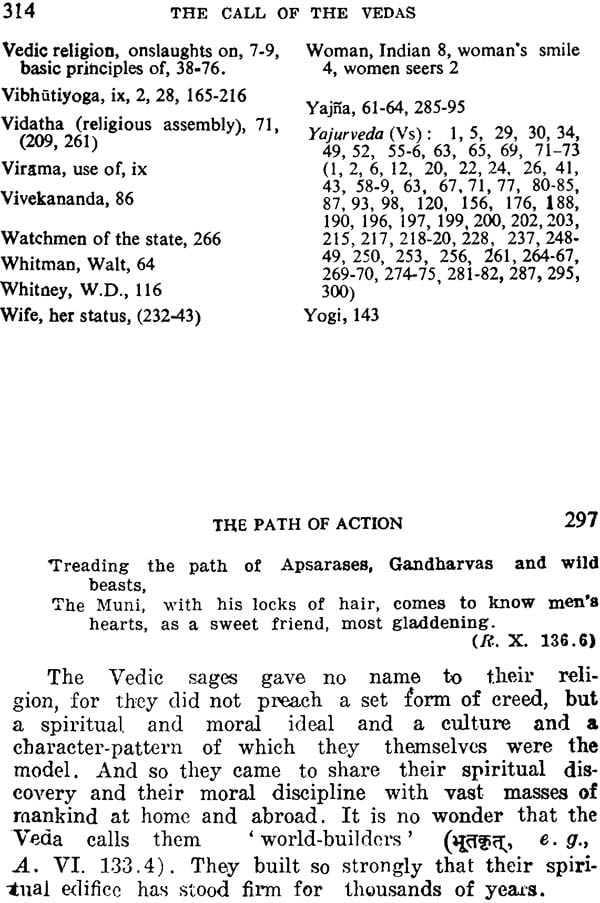
The Call of the Vedas (An Anthology of Hymns)
Book Specification
| Item Code: | NAD118 |
| Author: | Abinash Chandra Bose |
| Publisher: | Bharatiya Vidya Bhavan |
| Edition: | 1999 |
| Pages: | 323 |
| Cover: | Paperback |
| Other Details | 7.0 inch X 4.5 inch |
| Weight | 250 gm |
Book Description
Dr. Abinash Chandra Bose was born in East Bengal in 1896 and was educated in Calcutta and Dublin University (proceeding respectively, to the M.A and Ph.D. degrees of English). He was head of the department of English in Raja Ram College, Kolhapur, and post-graduate Teacher, Bombay University for twenty-five years, and has, since his retirement, worked as Principal under Calcutta and Saugar University.
He has been a keen student: of Sanskrit and taken a lifelong interest in the Vedas. He carried out researches in Mysticism in poetry at the Trinity College, Dublin. In addition to the aid from oriental scholarship, his personal contact with both the traditional and the revivalist schools of the Vedic religion, established through his stay in different parts of India, has helped him in his Vedic studies. His approach to the Vedas has been that of a lover of poetry and a student of India’s Spiritual history and comparative religion. He is also a writer in Bengali and a member of the P.E.N. His publications include Three Mystic Poets: A Study of W.B years, A.E and Rubindranath Tagore.
The Bharatiya vidya Bhavan –that Institute of Indian Culture in Bombay-needed a Book University, a series of books which, if read would serve the purpose of providing higher education. Particular emphasis however was to be put on such literature as revealed the deeper impulsions of India. As a first step, it was decided to bring out in English 100 books, 50 of which were to be taken in hand almost at once. Each book was to contain from 200 to 250 pages and was to be priced at Rs 2 It is our intention to publish the books we select, not only in English, but also in the following Indian language: Hindi, Bengali, Gujarati, Marathi, Tamil, Telugu, Kannada, and Malayalam.
This scheme, involving the publication of 900 volumes, requires ample funds and an all-India organization. The Bhavan is exerting its utmost to supply them.
The objectives for which the Bhavan stands are the reintegration of the Indian culture in the light of modern knowledge and to suit our present-day needs and the resuscitation of its fundamental values in their pristine vigour.
Let me make our goal more explicit:
We seek the dignity of man, which necessarily implies the creation of social conditions which would allow him freedom to evolve the lines of his own temperament and capacities; we seek the harmony of individual efforts and social relations, not in any makeshift way, but within the framework of the Moral Order; we seek the creative are of life, by the alchemy of which human limitations are progressively transmuted, so that man may become the instrument of God, and is able to see Him in all and all in Him.
The world, we feel, is too much with us. Nothing would uplift or inspire us so much as the beauty and aspiration which such books can teach.
In this series, therefore, the literature of India, ancient and modern, will be published in a form easily accessible to all. Books in other literatures of the world, if they illustrate the principles we stand for, will also be included.
This common pool of literature, it is hoped, will enable the reader, eastern or western to understand and appreciate currents of world thought, as also the movements of the mind in India, which though they flow through different linguistic channels, have a common urge and aspiration.
Fittingly, the Book University’s first venture is the Mohabharata summarized by one of the greatest living Indians, C.Rajagopalachari; the second work is on a section of it, the Gita by H.V.Divatia, an eminent jurist and a student of philosophy. Centuries ago, it was proclaimed of the Mahabharata: “What is no in it, is nowhere.” After twenty-five centuries, we can use the same words about it. He who knows it not, knows not the heights and depths of the soul; he misses the trials and tragedy and the beauty and grandeur of life.
The Mahabharata is not a mere epic; it is a romance, telling the tale of heroic men and women and of some who were divine; it is a whole literature in itself, containing a code of life, a philosophy of social and ethical relations, and speculative thought on human problems that is hard to rival; but above all, it has for its core the Gita, which is, as the world is beginning to find out, the noblest of scriptures and the grandest. Of sages in which the climax is reached in the wondrous apocalypse in the Eleventh Canto.
Through such books alone the harmonies underlying true culture, I am convinced, will one day reconcile the disorders of modern life.
I thank all those who have helped to make this new branch of the Bhavan’s activity successful.
The Upanishads have rightly attracted wide attention by the Vedas which are admittedly their sources have been treated more or less as sealed books. It is true that portions of them are difficult to interpret and have caused divergence of opinion, but fortunately there is much in them that does not present any great difficulty. I have limited this anthology to such verse in the Vedas as have caused no serious difference of opinion, in respect of interpretation, between the orthodox scholars and the orient lists. To be on safe ground I have adopted the oriental scholars western and Indian, as my authority and my translation is based on their work. I have however, attempted to keep the translation as close to the original as possible, often rendering line for line and word for word.
I have given a title to every mantra quoted and a commentary of my own. In writing the commentary my aim-has been to indicate the poetical and spiritual content of the mantras. In finding their spiritual and religious significance. I have drawn upon Indian sources, including the work of Indian spiritual leaders. I have not followed the orientalists in their anthropological approach to the Vedas. My commentary, however, contains material that may interest the student of comparative religion.
In quoting the Vedas I have as a rule, taken the mantra as the unit. For this I have my support in the Vedas themselves. The later Vedas frequently quote single mantras from the earlier. The Upanishads also follow the same method. In fact, when after going through hundreds of verses, I selected a gem, thinking it was a fresh discovery on my part, I often found to my great surprise that my attempt had been forestalled millenniums ago by one of the Upanishads. But my surprise was not altogether unpleasant because it gave me considerable satisfaction to find that my choice had the confirmation of such high authority.
I have also followed the Vedic practice of repeating a mantra in different contexts.
As the anthology is meant for the general reader. The Vedic text has been printed without the usual accent marks. Again for the convenience of the general reader, I have without breaking up the sandhi, separated combined words by the free use of the uirama sign, to make the constituent words stand out clearly, this makes no difference in the pronunciation. I have partially departed from the international system.
I have grouped the mantras selected by me under different sections representing different spiritual attitudes in the manner of the Bhagavad Gita. In keeping with the spirit of the Vedas, I have placed karma-Yoga last, and have devoted much space to Vibhuti-Yoga, the path of splendor; which in my opinion is most characteristic of the Vedas, with their poetic approach to the Divine.
In the fairly long introduction I have attempted to view the Vedic religion in the historical perspective, to define its spiritual attitude and to study some of its more salient aspects.
While presenting my book to the public I record my obligation to the Vedic scholars, eastern and western, whose work I have frequently consulted and accepted as my guide, as well to the learned friends who have helped me with their advice. Portions of the Introduction were published in the Probuddha Bharata.
I am very grateful to shir .K.M.Munshi and the Bharatiya Vidya Bhavan for the inclusion of this book in the Bhavan’s Book University.
I am happy to find that this book has served to create some fresh interest in our immortal heritage, the Vedas. I again thank my learned friends who have helped me with further suggestions. I also thank those who by their critical estimate of my work have given me much encouragement.
Two indexes have been added to the book to facilitate reference.
| Kulapati’s Preface | v | |
| Preface | vii | |
| Preface to the Second Edition | ix | |
| Introduction | 1 | |
| I. | The Path of Devotion | 77 |
| II. | The Path of Knowledge | 105 |
| III. | The Path of mysticism | 125 |
| IV. | The Path of Splendour | 163 |
| V. | The Path of Action | 217 |
| Index of Vedic Mantras | 299 | |
| General Index | 309 |

